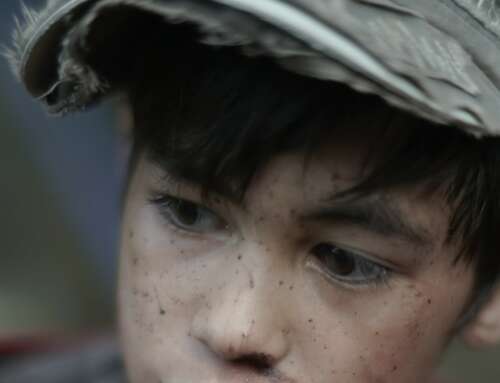I care deeply about young people and have done since I too was a moody, often confused adolescent who made some big, sometimes life-threatening, mistakes.
The development of the physical body together with sexual urges, novelty seeking behaviours, rapidly changing moods and emotional states make adolescence a very interesting time.
The developing pre-frontal lobe affects the ability of adolescents to manage emotional states such as anger, frustration, fear, boredom, shame and feelings of worthlessness. Their way of thinking can allow them to “frighten themselves with their imaginations” rather than accurately assess the current situation.
Even though it’s almost 40 years ago, I can still vividly remember a 15-year-boy who came into my English class after a maths class. Suddenly about ten minutes into the lesson he stood up abruptly, kicked his chair backwards and walked to the closest wall – a brick one – and punched the wall really hard! He then walked out of the classroom. I followed him to find him sitting on a bench with his head in his hands. Eventually he explained that he lost it because he had failed his maths test. He had actually broken three of his knuckles. This was the first time I had witnessed the incredible intensity of adolescent emotional angst as a teacher and it was a sobering experience.
Since then I have seen it often – in my classrooms, my counselling rooms and my home. Much like the two-year-old tantrum I have come to see it as quite normal to have these enormous bursts of intense emotion that can be sudden, seemingly irrational and frightening for both the adolescent and the grown-ups nearby.
Emotion is a term that describes certain feelings and bodily changes that occur when the brain is aroused. Emotions are often aroused from an unconscious level of the brain.
Adolescents tend to rely more on the emotional part of their brain. The limbic or emotional brain does some serious growing during adolescence, along with many other brain changes and we must remember that our loving teens do not ask for that to happen and they have no idea it has happened.
There is now significant research that has established that the adolescent brain interprets emotional expressions differently to the adult brain. They can seriously misinterpret normal facial cues, which they had no problem interpreting before!
The adolescent response to threat
When we add to this dynamic mix the tendency for the adolescent brain to be wired via the threat centre – the amygdala – rather than the wise mature pre-frontal cortex, then adolescents are more likely to be triggered than mature adults by often quite small thing. This also influences such aspects as hunger, thirst, sleep, sexual response and hormone production. The limbic system is particularly affected by the great surge of sex hormones.
This is also partly why so many adolescents can be obsessive about clothes, music, personal image, peer pressure and infatuations with others. This heightened sensitivity can appear quite irrational at times to adults because we have a pre-frontal lobe that allows for reasoned thinking. They also experience big highs and lows that occur rapidly. This can be very confusing and confronting for adolescents.
I have spoken a lot about the ‘cracked windscreen’ view that seems to appear in adolescence where young people simply see things very differently to how they saw things before or after adolescence.
A zit can appear to be so enormous after the initial changes in the adolescent journey. They can see a student rolling their eyes at them as a sign of bullying, and they often interpret a parent’s gentle reminder as a form of criticism!
Emotional intensity definitely increases in this window of change. I was once working with 500 adolescents in a school in rural NSW and I noticed that they were subdued, even sad. I quietly asked one of the girls if there had been a death in the community recently as everyone seemed sad. She answered me “No but Noah died on Home and Away last night!” So these emotionally vulnerable teens were all grieving – for a character in a soapie! The emotional distress was very real. It can be easy for us older folks to think it’s a bit silly and we need to really accept that emotional intensity is much higher, especially in early adolescence. This fact is possibly why they can slam doors or discharge verbal diatribes in very loud voices – it really is an intense experience.
Before we explore the emotional world of adolescents we need to remember the very nature of this time of transition from being a child to becoming an adult.
Decision-making through a cracked windscreen
Good decisions involve rationally assessing the risks, benefits and alternative actions that are relevant in any particular case. While adolescents are beginning to think more like adults than children, they often still need help from their parents or other safe grown-ups to make decisions that have serious or long-term consequences. This is because adolescents:
- Are likely to be more impulsive.
- Lack rational thinking strategies.
- Are looking for novelty experiences.
- Are less concerned about risk.
- Are not thinking about the future.
- Are more susceptible to peer and friendship influence.
- Are more concerned about physical appearance.
- Are hungry to be accepted and to belong
- Even though you were once an adolescent, things are very different for our teens today. It is not so much an generation gap as a generation chasm.
All emotions are normal – it’s what we do with them that matters.
Let’s be honest we can all struggle with big ugly feelings at times that are triggered by events and thoughts. Mature grown-ups have a finished brain, which means their pre-frontal cortex or executive functioning brain has fully developed and it can help us soothe ourselves by making choices to change how we feel.
– Maggie Dent
Read more: Why Emotional Turmoil in Adolescence is Normal
Image Source: Pixabay







Leave A Comment